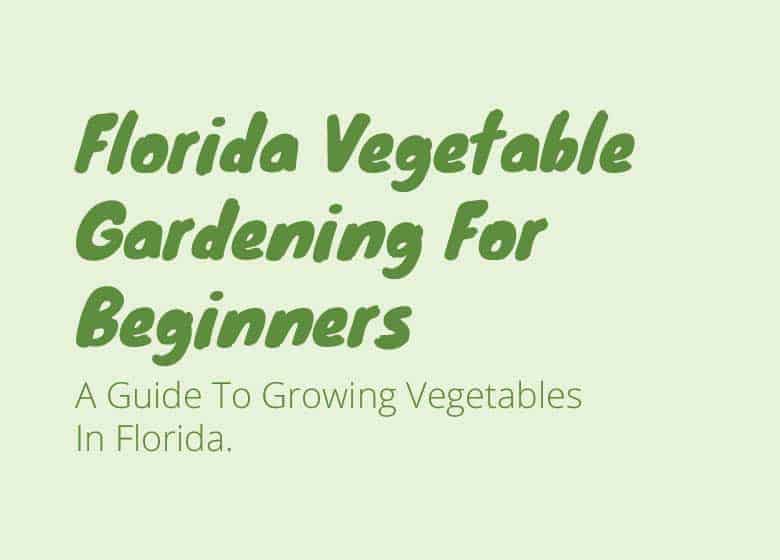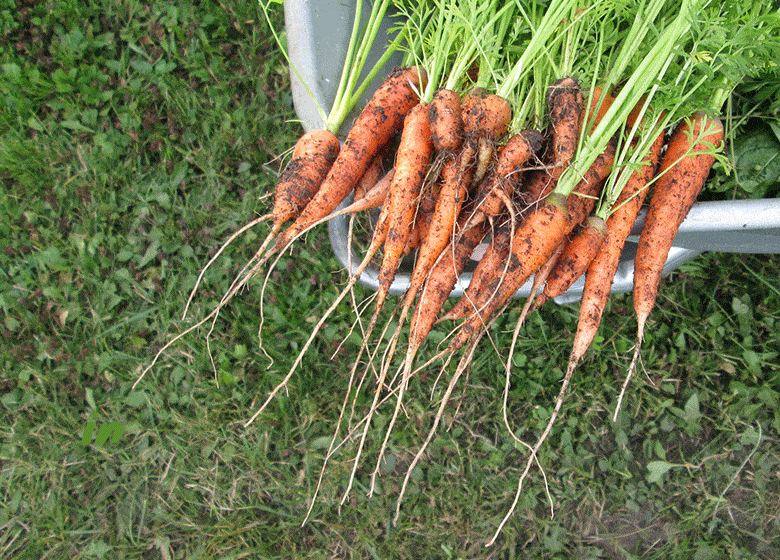
When it comes to growing carrots in Florida, The hardest part is getting the seeds to start.
In Florida, plant carrots between September and March. The best varieties to plant are Chantenay Royal, Nantes Half Long, and Imperator 58. Plant in an area with Full sun and ensure that seedlings stay wet during the germination process.
Carrots can take up to two weeks to germinate. This a problem if you have weeds coming up at the same time, weeds are fast-growing and will out-compete your carrot seeds. The most important thing to focus on is keeping your carrot seeds wet the whole time.
This is where I think I always run into problems when trying to grow carrots. The seeds are really small and shouldn’t be planted deep so I’ve always struggled with keeping the seeds at the correct moisture through the germination process.
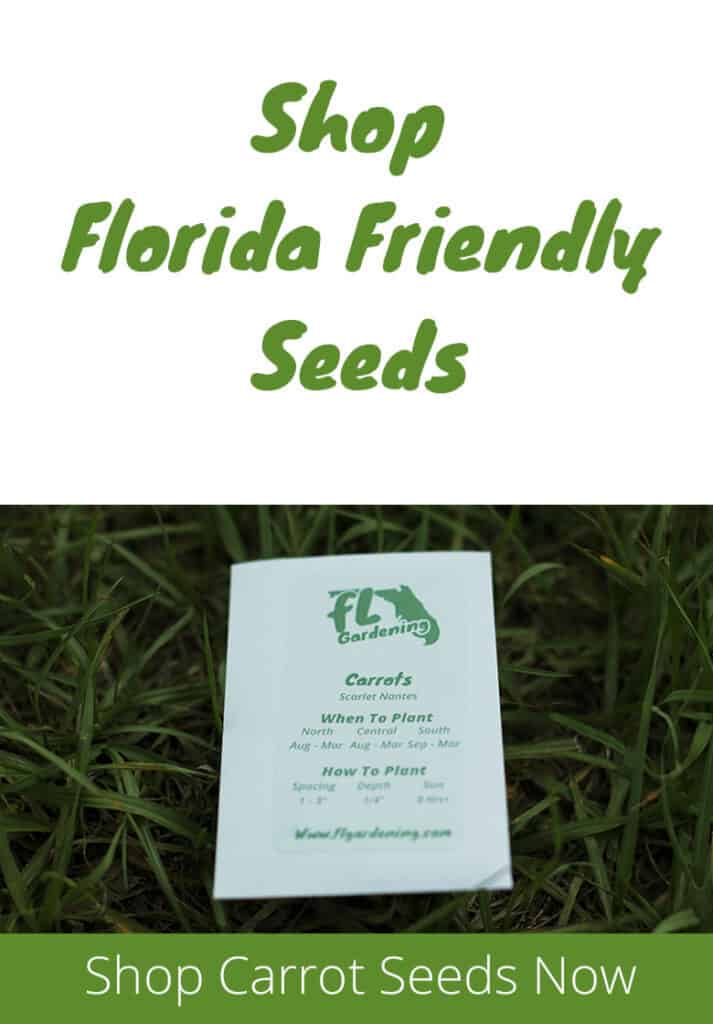
When To Plant Carrots in Florida
Carrots enjoy the cooler weather that we have to offer throughout fall and into the early spring months. They don’t mind being chilly either, they can take temperatures below 20°F.
| North Florida | August – March |
| Central Florida | August – March |
| South Florida | September – January |
The colder the weather the sweeter the root actually. So those in north Florida have a good shot at growing some really high quality and sweet carrots.
Carrot seeds should be directly planted into the garden, they do not transplant well. You can grow a lot of carrots in a relatively small space.
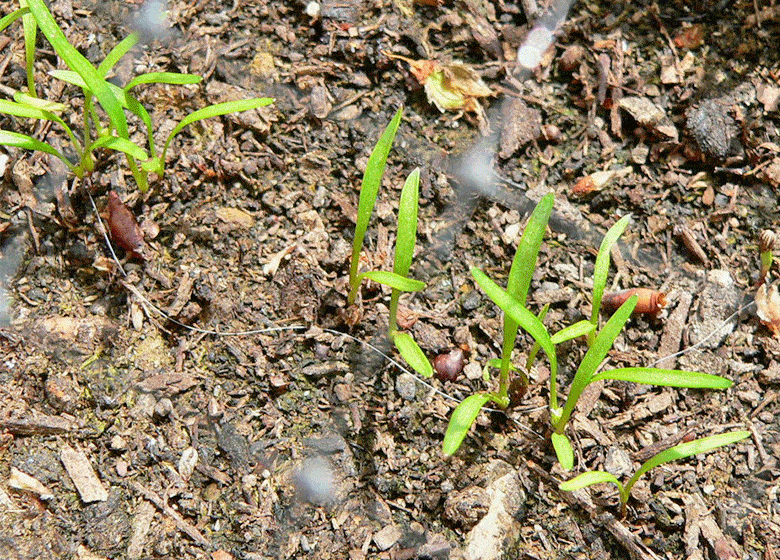
each plant only needs 1-3 inches of space. The small the space you give your carrot the small the carrot will be. but if you give your carrot plant plenty of space for a big fat root, it will certainly grow that way.
You only need to plant carrot seeds 1/4 inch into the soil. I’ve found it best to create a little trough and to sprinkle seeds liberally in there. I then just lightly cover the seeds. If there are too many seedlings popping up you can always thin them out. It’s better to have too many rather than not enough.
Best Variety of Carrots For Florida
Orange is not the only color that carrots can wear. They also look great in deep purple and bronze yellow.
| Best Carrot Varieties For Florida |
| Chantennays |
| Danvers |
| Imperator 58 |
| Nantes Half Long |
| Purple Haze |
| Yellow Bunch |
| White Satin |
Some carrots (like Chantennays) grow short and stalky. while others (like Imperator 58) grow more like your standard looking orange carrot you get from Publix.
Many varieties of carrot seed are also sold as “pelleted” this means that they are covered in something like clay to give the seeds a larger more uniform shape that makes them easier to handle. I’ve never tried these before but I’ve heard from many gardeners that it lowers their germination rate even more.
Caring For Carrots
When selecting a place to plant carrots you should take into account sunlight and soil conditions. Carrots will need at least 8 hours of full sun to fully mature.
The soil that you are planting in needs to be loose, have a good amount of organic material and be rich in nutrients. Carrots like to eat.
Since carrots are a root crop, in order to encourage good growth its best if the soil is loose. This allows the roots to expand easier.
Carrot seeds can take 2 weeks to germinate, which feels like forever while you’re watering what seems to be just a patch of dirt. I believe this is the hardest part when growing carrots. after they have germinated you should be smooth sailing. To help with this process I really recommend having a soaker hose set up for watering your garden.
I find a drip hose beneficial (not only to starting carrot seeds but all seeds) because this ensures that the soil is wet but undisturbed. If using a watering can or hose, the water falling can agitate the soil and this can affect seed germination.
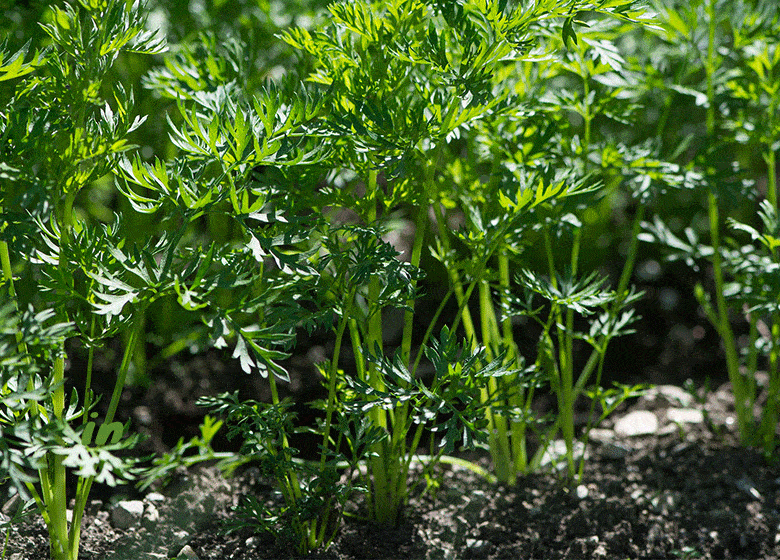
Since carrot seeds are so tiny, there is no doubt, that you probably planted too many. you will have to thin some of the little seedlings as they come up. Thin seeds to give each plant 1-3 inches of room.
After carrots have become established you just need to maintain regular watering and weeding.
Fertilizing Carrots
Since carrots are a root crop they will require a different fertilizer than a plant like a tomato which produces fruit.
Each nutrient does something different for your plant. the tree numbers that you see on most fertilizer bags are the N (nitrogen) – P (phosphorus) – K (Potassium) values.
Nitrogen helps your plant produce green, leafy growth. Phosphorus helps your plant produce healthy roots and flowers and potassium is a good overall health booster.
A good carrot fertilizer will be lower in nitrogen and higher in Phosphorus and Potassium.
Harvesting Carrots
Pull your carrots as you need them. You can pull carrots and eat them as young and tender roots or let them mature a little bit.
Carrots are fully mature and ready for harvest 70 to 120 days after planting.
The only way to tell if your carrots are really ready is to pull one up and see. If you do happen to let your carrots grow past that 120-day window you will have carrots that begin to turn tough. The roots will turn woody and become inedible.
Common Carrot Problems
Carrots may be attacked by soil living bugs, like the nematode, the skinned maggot, and wireworms. All of these bugs damage the roots of the plants
The best way to help avoid these two problems is to plant carrots in different spots every year. Growing the same crop in the same location, year after year encourages problems.
I’m a big fan of planting a diverse garden to help promote a healthy ecosystem. This attracts lots of good bugs and helps fight off a lot of the bad bugs.
You may also see Alternaria leaf spot. This is a common disease that causes leaf discoloration. The best way to avoid this disease is to make sure that the foliage stays dry. Another reason I like drip irrigation.
How To Grow Carrots In Florida
- In Florida, plant carrots September through March.
- Florida friendly varieties of carrots are Chantennays, Danver, Imperator 58, Nantes Half Long, Purple Haze, Yellow Bunch, and White Satin.
- Seeds can take 2 weeks to germinate and need to stay consistently moist. Use a soaker hose to help germination.
- Plant in full sun and soil that loose and full of nutrients.
- Fertilize with something that has less nitrogen and more phosphorus and potassium.
- Harvest 70 -120 days after planting
- Watch out for Alternaria Leaf Spot, wireworms, and nematodes.

Learn All You Need To Know To Start A Garden
